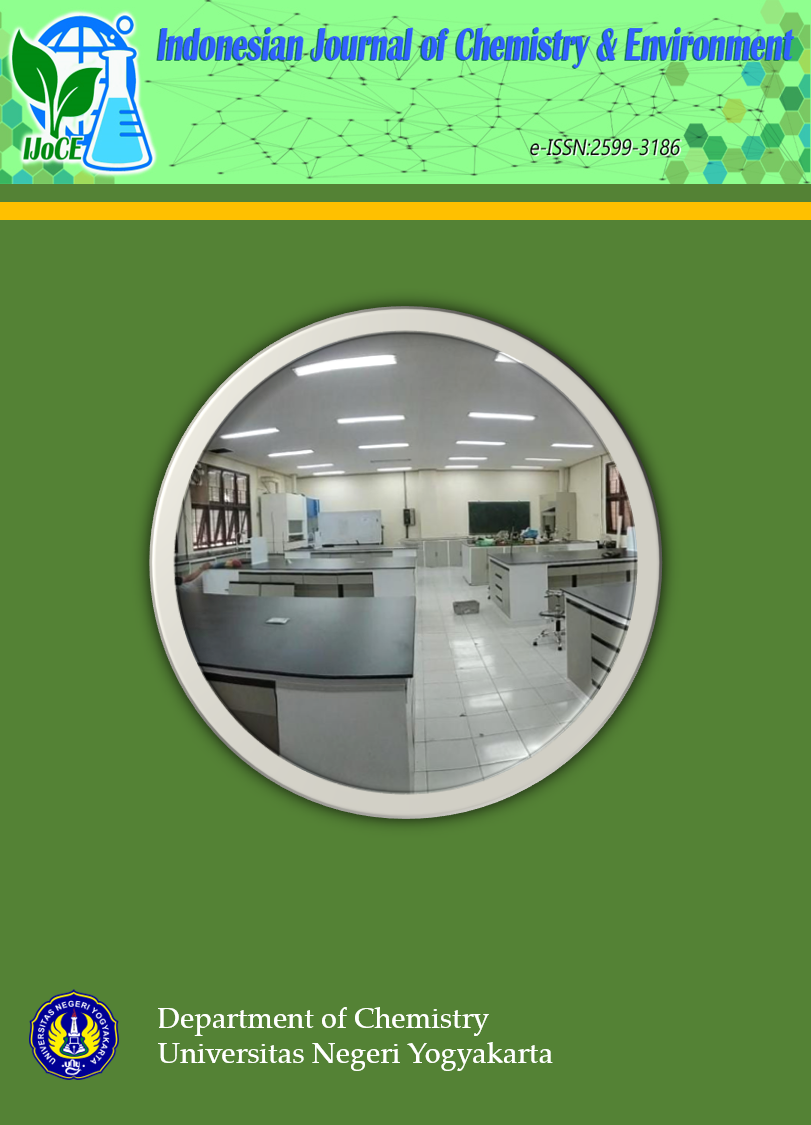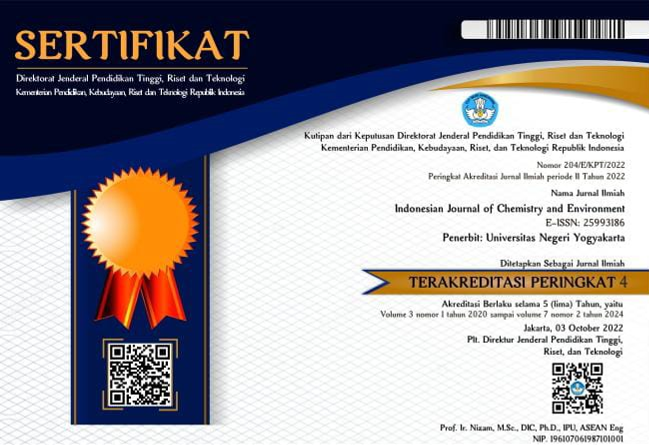Determination of Magnesium and Iron in Goat's Milk Powder by Flame Atomic Absorption Spectrophotometry
DOI:
https://doi.org/10.21831/ijce.v2i1.30291Abstract
This research aims to determine the levels of magnesium and iron in goat milk powder. The method of this research was atomic absorption spectrophotometry. The research subject was goat milk powder. Moreover, the research object was the amount of magnesium and iron in goat's milk powder. Before analyzing, the first step was removing organic substances in the sample that could interfere the analysis by dissolved it in concentrated nitric acid and heated. Based on the measurement using flame atomic absorption spectrophotometry method, absorbance and concentration of magnesium and iron in the sample were obtained. The analysis showed that the levels of magnesium and iron in the sample were 0.0032 mg/g and 0.0218 mg/g.
Downloads
Published
2020-02-21
How to Cite
[1]
Kusumaningtyas, H. et al. 2020. Determination of Magnesium and Iron in Goat’s Milk Powder by Flame Atomic Absorption Spectrophotometry. Indonesian Journal of Chemistry and Environment. 2, 1 (Feb. 2020), 13–18. DOI:https://doi.org/10.21831/ijce.v2i1.30291.
Issue
Section
Articles
Citation Check
License
Authors who publish with this journal agree to the following terms:
- Authors retain copyright under a Creative Commons Attribution–ShareAlike License (CC BY SA) that allows others to share: copy, and redistribute the material in any medium or format, Adapt: remix, transform, and build upon the material, for any purpose, even commercially.
- Authors are able to enter into separate, additional contractual arrangements for the non-exclusive distribution of the journal's published version of the work (e.g., post it to an institutional repository or publish it in a book), with an acknowledgement of its initial publication in this journal.
- Authors are permitted and encouraged to post their work online (e.g., in institutional repositories or on their website) prior to and during the submission process, as it can lead to productive exchanges, as well as earlier and greater citation of published work.










